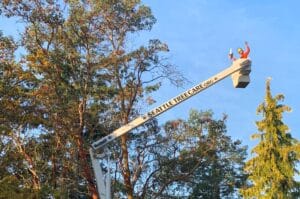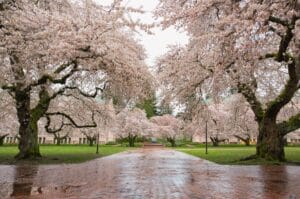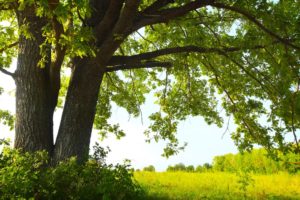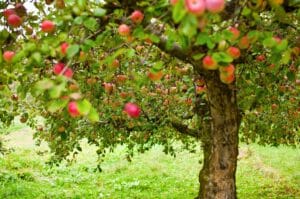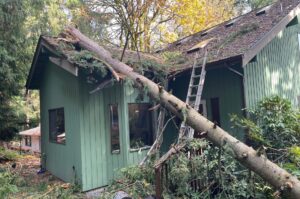How to Use Mulch to Keep Seattle Trees Healthy
Arborists in Washington share all the insider details about proper mulching. The Whats and Whys of Mulch When you see a well-landscaped area, it may well seem like an incredible feat of engineering, or just plain magic. Beautifully placed flowers and trees and impossibly neat beds may seem impossible for
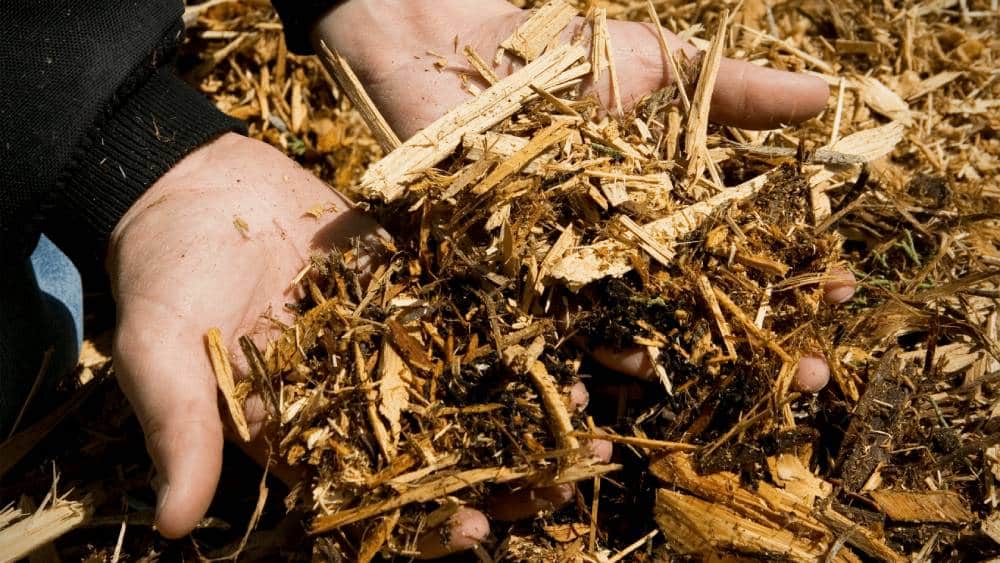
Arborists in Washington share all the insider details about proper mulching.
The Whats and Whys of Mulch
When you see a well-landscaped area, it may well seem like an incredible feat of engineering, or just plain magic. Beautifully placed flowers and trees and impossibly neat beds may seem impossible for anyone less than a professional gardener. But if you bring vigilance, hard work, and mulch to the gardening table, you’ll be on your way to that perfect garden you’re envisioning.
Mulch is important to any tree’s health. But what exactly is mulch? Mulch is any material placed around plants to improve the soil. Whether it’s the layer of duff on the forest floor or the wood chips from a recent landscaping project, mulch benefits trees in numerous ways.
Mulch 101: The Basics
Mulch is “material spread around or over a plant to enrich or insulate the soil.” It can be any material “applied to the surface of the soil.” While mulch is primarily thought of as organic, there are several inorganic options that people see that would technically be defined as mulch. This is an enormously broad category that covers a wide range of materials.
Mulch Types and Their Uses
Both organic mulch and inorganic mulch have their uses. Both types of mulch can be used in landscaping for aesthetic purposes and for ground insulation. Inorganic mulch is primarily used as a weed barrier and for clear delineation of paths and play areas.
- Types of Inorganic Mulch:
- Landscaping Plastic and Rubber (like recycled tires)
- Pebbles
- Crusher Dust
Organic mulch is used as a nutrient source for the soil in addition to its other uses.
- Types of Organic Mulch:
- Wood chips
- Bark Nuggets
- Grass Clippings
- Leaves
- Shredded Newspaper
- Hay
- Compost
- Manure
What Kind of Mulch is Best?
These are just some of the reasons to use mulch. But with so many different types of mulch out there, what works best for trees?
As arborists, we always recommend wood chips. Wood chips are a great organic material that have all the above benefits, as well as as the added bonus of repurposing a tree that’s being removed.
Arborist wood chips are rarely uniform in size but contain a good mix of woody and leaf matter. This mixture decomposes at different rates, which means your plants will get the benefits of added nutrients in both the short and long term.
The Natural Benefits of Mulching
In the wilderness, dead leaves and sticks fall from trees, animals leave their deposits in the shade. All of these decay and return nutrients to the soil. Mulching is basically the human way of imitating this natural process of decay and renewal that takes place This is perhaps the primary reason for mulching. There are, however, many others:
- Temperature Regulation: Mulch insulates the soil keeping it cooler in summer and warmer in winter.
- Moisture Maintenance: Mulch protects the water in the soil, preventing evaporation and allowing for more absorption by the plants and trees that need it.
- Weed Barrier: Mulch discourages weed germination by blocking sun exposure. Weeds that do grow in the mulch are much easier to remove.
- Soil Maintenance: The nutrient dump from decaying mulch has already been mentioned, but somewhat counterintuitively, soil is less likely to become compacted when it is mulched. It stays soft and the roots can penetrate it for a stronger tree or plant structure above and below.
What Does Mulch Do?
Here are just a few reasons to place mulch around trees:
- Insulation: A layer of mulch can insulate the soil, keeping it at a moderate temperature.
- Moisture: Mulch can trap water and help to keep soils, and therefore tree roots, moist.
- Weed Suppression: Mulch does a great job of keeping any unwanted volunteers away by blocking their access to sunlight and the sneaky weeds that get through are much easier to pull in a recently mulched bed.
- Nutrients: Organic mulch decomposes into essential plant nutrients such as Carbon and Nitrogen. Mulch also prevents these nutrients from draining away when it rains
- Humus: Organic mulch can decay into a rich material known as humus. Humus improves the soil by increasing porosity and reducing soil compaction.
Using Mulch Properly
If proper mulching technique is not used, mulch can actually create problems. Too much mulch can smother roots and inhibit growth. Placing mulch too close to a tree trunk can invite pests and disease to settle into the trunk and may damage and eventually kill the tree.
Mulching Tips:
- The mulch needs to be no deeper than 4 inches.
- The optimum depth is 2-4 inches depending on the mulch type you are using.
- Mulching trees takes special care. Leave open space around the trunk and root flare (the widest part of the tree at the bottom of the trunk), like the hole in the middle of a bagel.
- Even though organic mulch must be replaced regularly, it is the best choice for mulching plants and trees.
How To Use Mulch
Follow these instructions when applying wood chips to your tree:
- Weed the area around the base of the tree first. These species are competing with the tree for nutrients and it is best for the trees health if they are removed before the mulch is applied.
- Apply 2-4 inches of mulch in a ring around the base of your tree. Be sure not to get the wood chips on the trunk as that can often invite decay and other problems.
- Make sure the ring is flat and uniform in thickness and avoid the “Mulch Volcano.” While it might be tempting to turn your mulch ring into the next Mt. Rainier, if the mulch is piled too high it might cause the tree to root into the mulch.
By following these steps, your newly planted tree will thrive, and be a benefit to you and your property for years to come.
For more mulching techniques, refer to this handout from the International Society of Arboriculture.
Looking for wood chips? Check out Chip Drop.
Recent Articles
Looking for More?
We've got you covered with tips, resources, updates, how-to's, and other helpful information about trees and landscapes in Seattle, Puget Sound, and King County, WA. Join the thousands of smart local residents who get the monthly newsletter from Seattle Tree Care for helpful information you won't want to miss!
There's no spam - we promise! We are committed to keeping your e-mail address confidential. We do not sell, rent, or lease our contact data or lists to third parties.


